Disruption of Toxoplasma gondii-Induced Host Cell DNA Replication Is Dependent on Contact Inhibition and Host Cell Type
- PMID: 35587658
- PMCID: PMC9241542
- DOI: 10.1128/msphere.00160-22
Disruption of Toxoplasma gondii-Induced Host Cell DNA Replication Is Dependent on Contact Inhibition and Host Cell Type
Abstract
The protozoan Toxoplasma gondii is a highly successful obligate intracellular parasite that, upon invasion of its host cell, releases an array of host-modulating protein effectors to counter host defenses and further its own replication and dissemination. Early studies investigating the impact of T. gondii infection on host cell function revealed that this parasite can force normally quiescent cells to activate their cell cycle program. Prior reports by two independent groups identified the dense granule protein effector HCE1/TEEGR as being solely responsible for driving host cell transcriptional changes through its direct interaction with the cyclin E regulatory complex DP1 and associated transcription factors. Our group independently identified HCE1/TEEGR through the presence of distinct repeated regions found in a number of host nuclear targeted parasite effectors and verified its central role in initiating host cell cycle changes. Additionally, we report here the time-resolved kinetics of host cell cycle transition in response to HCE1/TEEGR, using the fluorescence ubiquitination cell cycle indicator reporter line (FUCCI), and reveal the existence of a block in S-phase progression and host DNA synthesis in several cell lines commonly used in the study of T. gondii. Importantly, we have observed that this S-phase block is not due to additional dense granule effectors but rather is dependent on the host cell line background and contact inhibition status of the host monolayer in vitro. This work highlights intriguing differences in the host response to reprogramming by the parasite and raises interesting questions regarding how parasite effectors differentially manipulate the host cell depending on the in vitro or in vivo context. IMPORTANCE Toxoplasma gondii chronically infects approximately one-third of the global population and can produce severe pathology in immunologically immature or compromised individuals. During infection, this parasite releases numerous host-targeted effector proteins that can dramatically alter the expression of a variety of host genes. A better understanding of parasite effectors and their host targets has the potential to not only provide ways to control infection but also inform us about our own basic biology. One host pathway that has been known to be altered by T. gondii infection is the cell cycle, and prior reports have identified a parasite effector, known as HCE1/TEEGR, as being responsible. In this report, we further our understanding of the kinetics of cell cycle transition induced by this effector and show that the capacity of HCE1/TEEGR to induce host cell DNA synthesis is dependent on both the cell type and the status of contact inhibition.
Keywords: FUCCI; HCE1; HCE1/TEEGR; S-phase; TEEGR; Toxoplasma gondii; cell cycle; cyclin E; host-parasite interaction; parasite effectors.
Conflict of interest statement
The authors declare no conflict of interest.
Figures
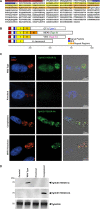

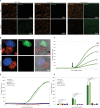
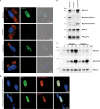
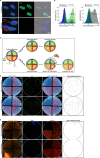
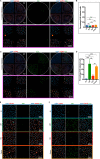
Similar articles
-
Toxoplasma Controls Host Cyclin E Expression through the Use of a Novel MYR1-Dependent Effector Protein, HCE1.mBio. 2019 Apr 30;10(2):e00674-19. doi: 10.1128/mBio.00674-19. mBio. 2019. PMID: 31040242 Free PMC article.
-
Hypermigration of macrophages through the concerted action of GRA effectors on NF-κB/p38 signaling and host chromatin accessibility potentiates Toxoplasma dissemination.mBio. 2024 Oct 16;15(10):e0214024. doi: 10.1128/mbio.02140-24. Epub 2024 Aug 29. mBio. 2024. PMID: 39207098 Free PMC article.
-
A combination of four Toxoplasma gondii nuclear-targeted effectors protects against interferon gamma-driven human host cell death.mBio. 2024 Oct 16;15(10):e0212424. doi: 10.1128/mbio.02124-24. Epub 2024 Sep 18. mBio. 2024. PMID: 39292011 Free PMC article.
-
Translocation of effector proteins into host cells by Toxoplasma gondii.Curr Opin Microbiol. 2019 Dec;52:130-138. doi: 10.1016/j.mib.2019.07.002. Epub 2019 Aug 23. Curr Opin Microbiol. 2019. PMID: 31446366 Free PMC article. Review.
-
Secreted Effectors Modulating Immune Responses to Toxoplasma gondii.Life (Basel). 2021 Sep 20;11(9):988. doi: 10.3390/life11090988. Life (Basel). 2021. PMID: 34575137 Free PMC article. Review.
Cited by
-
Toxoplasma gondii, a plea for a thorough investigation of its oncogenic potential.Heliyon. 2023 Nov 10;9(11):e22147. doi: 10.1016/j.heliyon.2023.e22147. eCollection 2023 Nov. Heliyon. 2023. PMID: 38034818 Free PMC article. Review.
-
Toxoplasma gondii infection-induced host cellular DNA damage is strain-dependent and leads to the activation of the ATM-dependent homologous recombination pathway.Front Cell Infect Microbiol. 2024 Mar 8;14:1374659. doi: 10.3389/fcimb.2024.1374659. eCollection 2024. Front Cell Infect Microbiol. 2024. PMID: 38524184 Free PMC article.
-
Toxoplasma gondii modulates the host cell cycle, chromosome segregation, and cytokinesis irrespective of cell type or species origin.Parasit Vectors. 2024 Apr 5;17(1):180. doi: 10.1186/s13071-024-06244-2. Parasit Vectors. 2024. PMID: 38581071 Free PMC article.
-
Toxoplasma gondii Me49 and NED strains arrest host cell cycle progression and alter chromosome segregation in a strain-independent manner.Front Microbiol. 2024 Feb 21;15:1336267. doi: 10.3389/fmicb.2024.1336267. eCollection 2024. Front Microbiol. 2024. PMID: 38450167 Free PMC article.
-
Toxoplasma gondii infection induces early host cell cycle arrest and DNA damage in primary human host cells by a MYR1-dependent mechanism.Commun Biol. 2024 Dec 16;7(1):1637. doi: 10.1038/s42003-024-07374-0. Commun Biol. 2024. PMID: 39681694 Free PMC article.
References
-
- Dubey JP, Beattie CP. 1988. Toxoplasmosis of animals and man. CRC Press, Boca Raton, FL.
-
- Dubey JP. 2007. The history and life cycle of Toxoplasma gondii, p 1–17. In Weiss LM, Kim K (ed), Toxoplasma gondii, the model Apicomplexan: perspectives and methods. Elsevier, New York, NY.
Publication types
MeSH terms
Substances
Grants and funding
LinkOut - more resources
Full Text Sources
